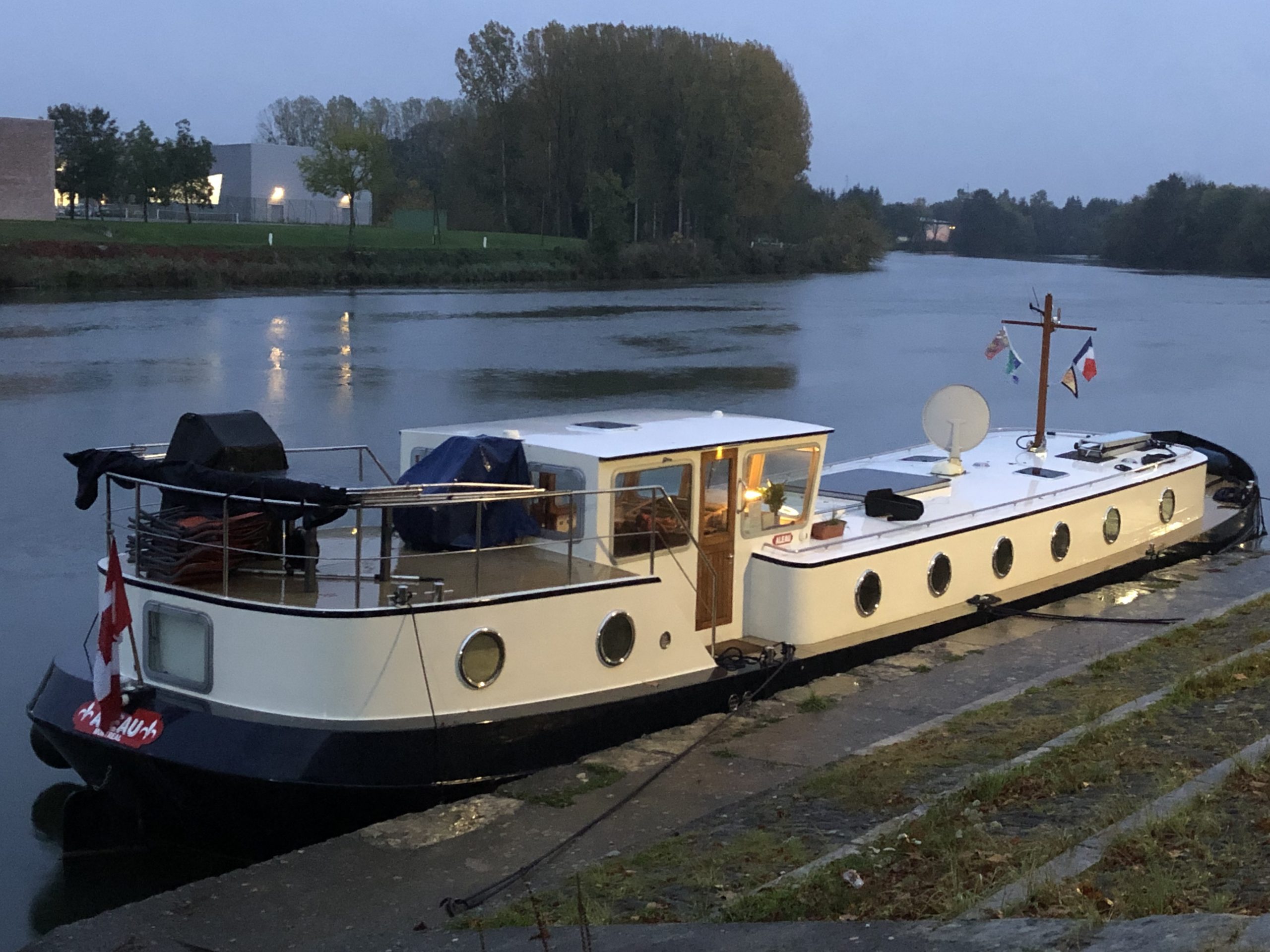Freed from the ‘floating solution,’ with her bottom blacked and new paint on top, Esme left Tinnemans.
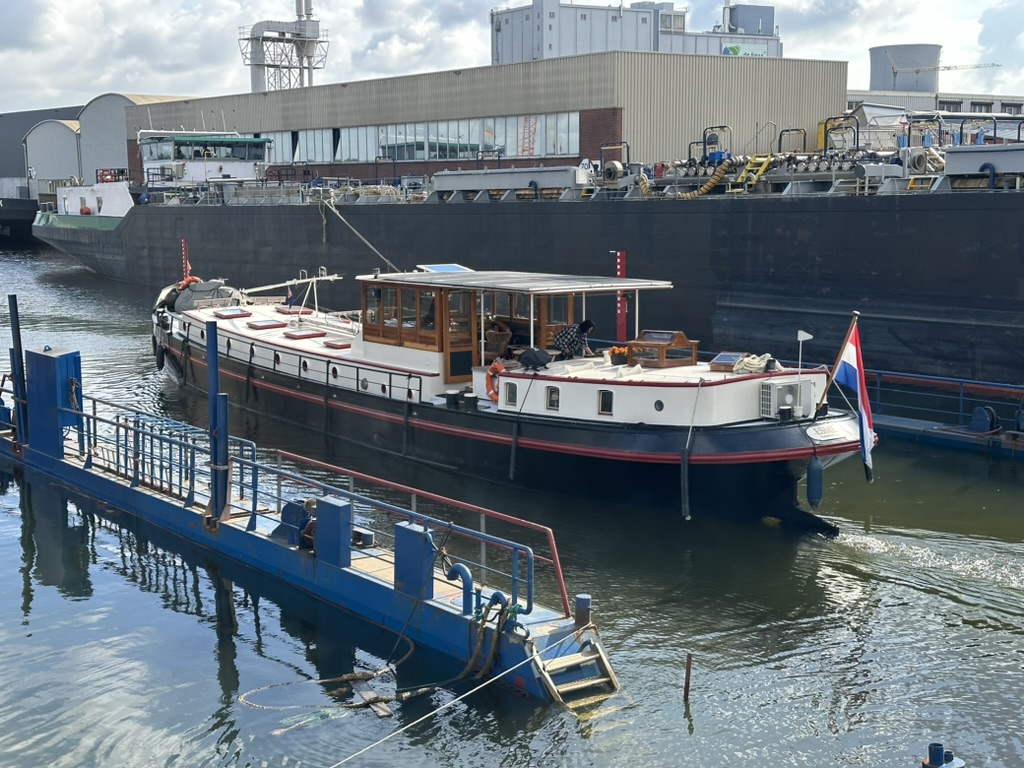
Now, it was our turn. Aleau was gingerly released from her mooring spot.
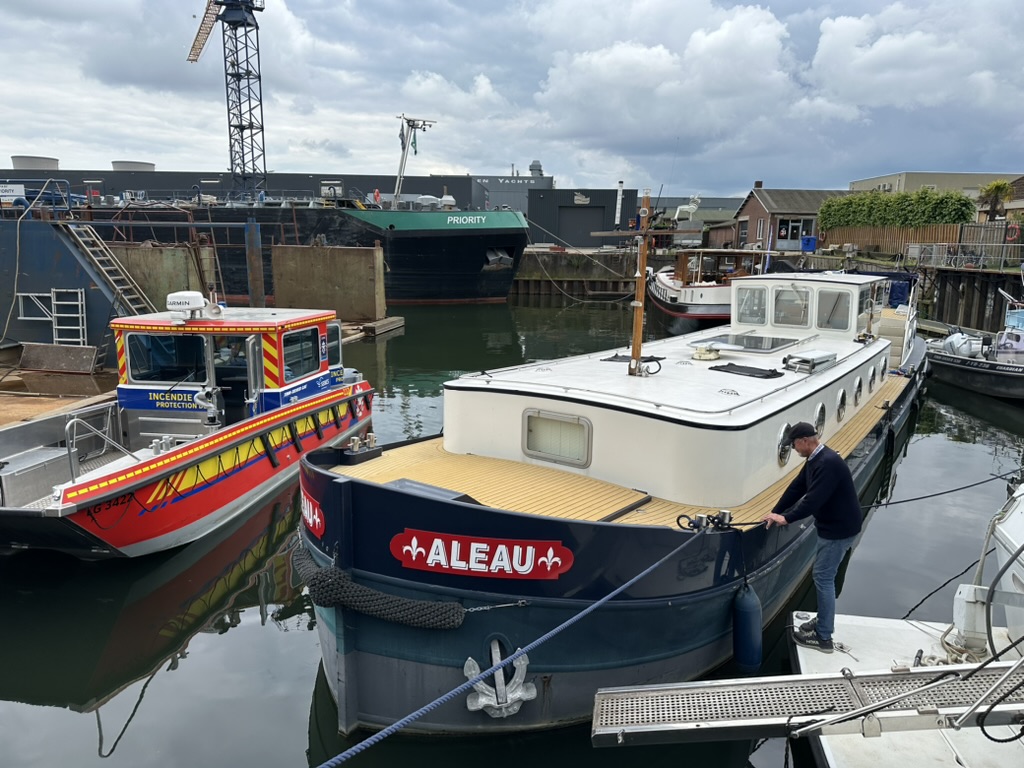
The raft was waiting for us – although it first needed to be filled with water and sunk so we could float on top of it.
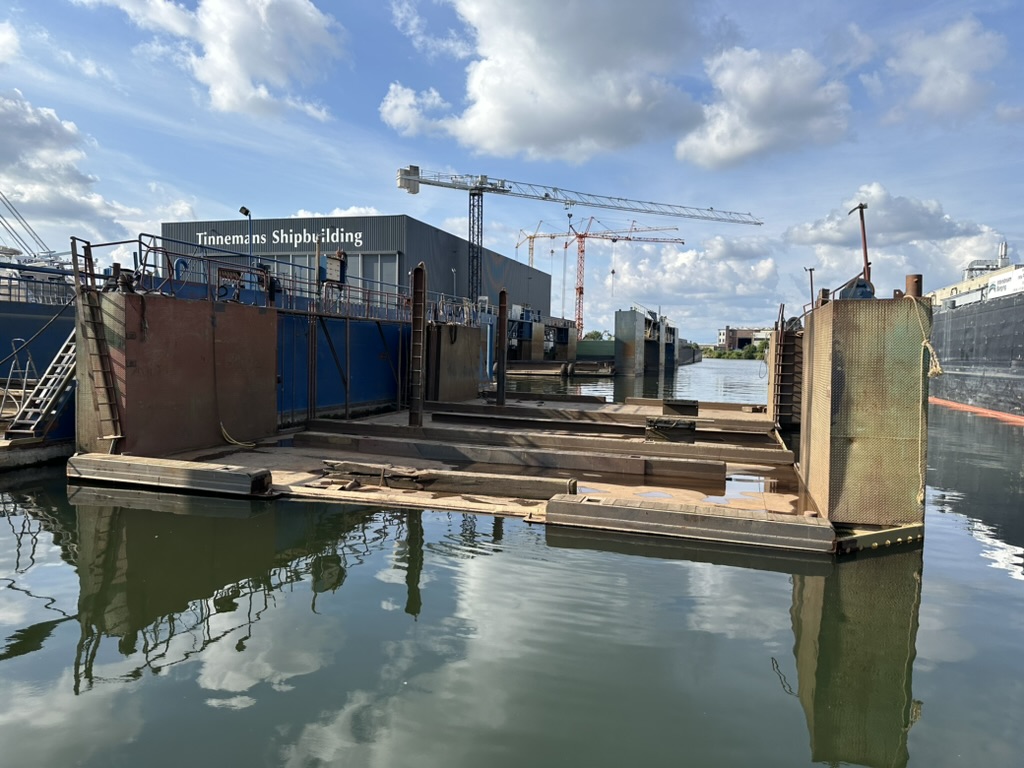
Then Aleau was pulled into position.
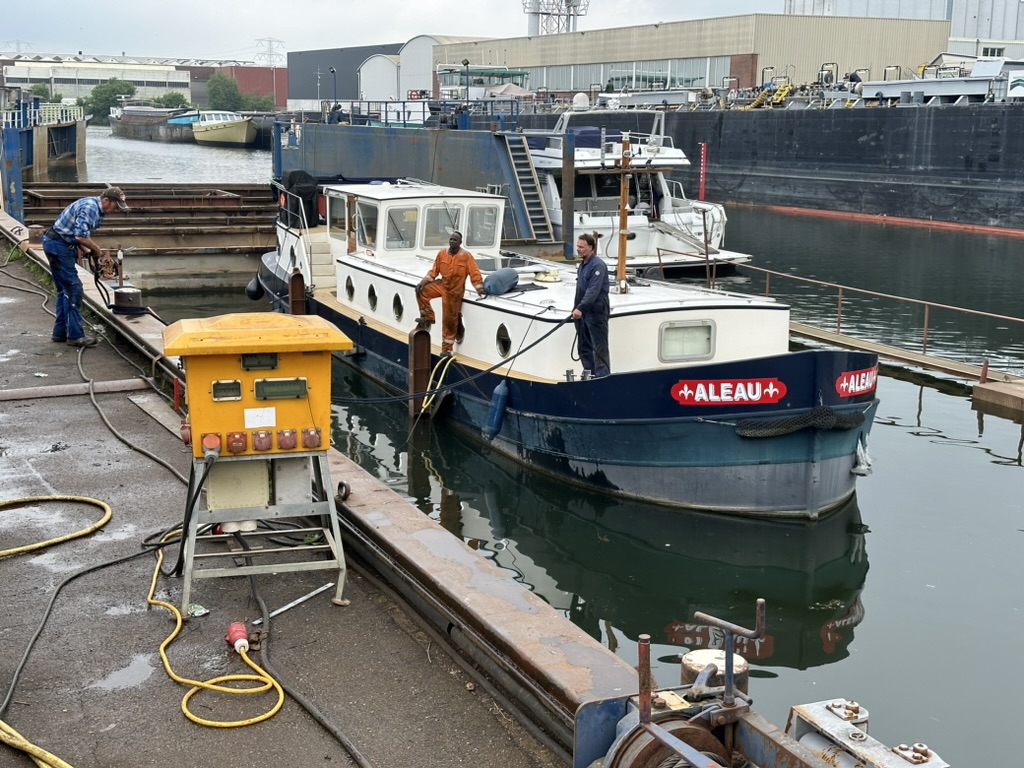
Because Aleau would be out of the water, Jan Tinnerman came to make sure our home – that we continued to live on – would be securely tied to a support pole to keep her from tipping over.
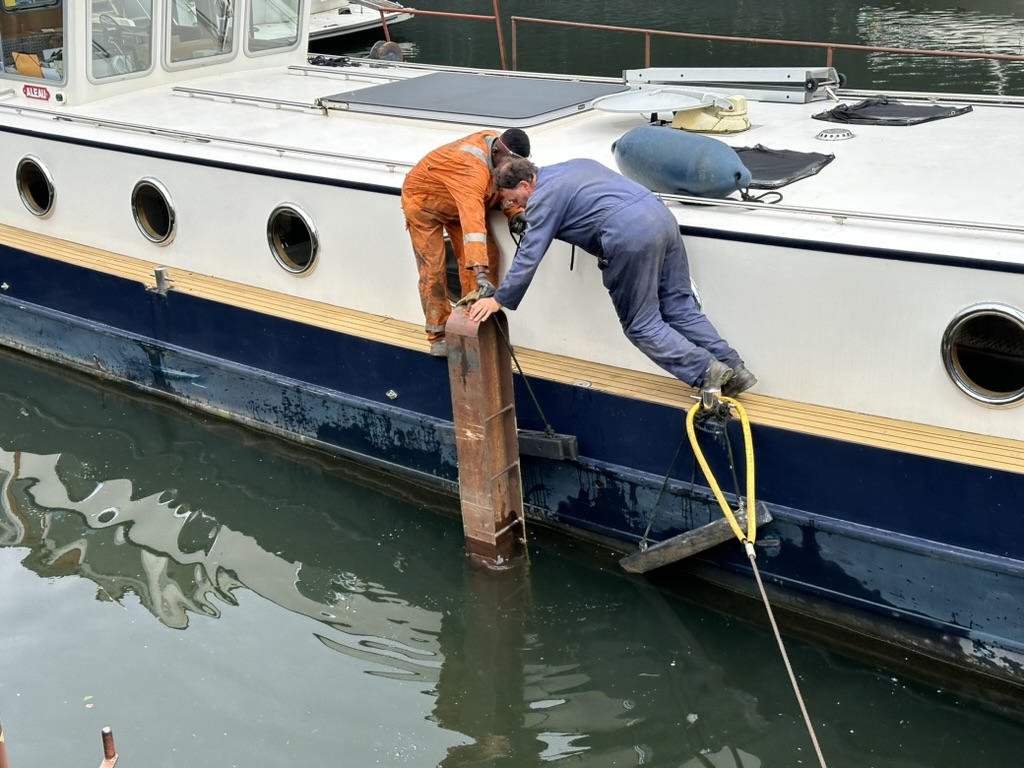
With Aleau tied in position, water was pumped out of the raft.
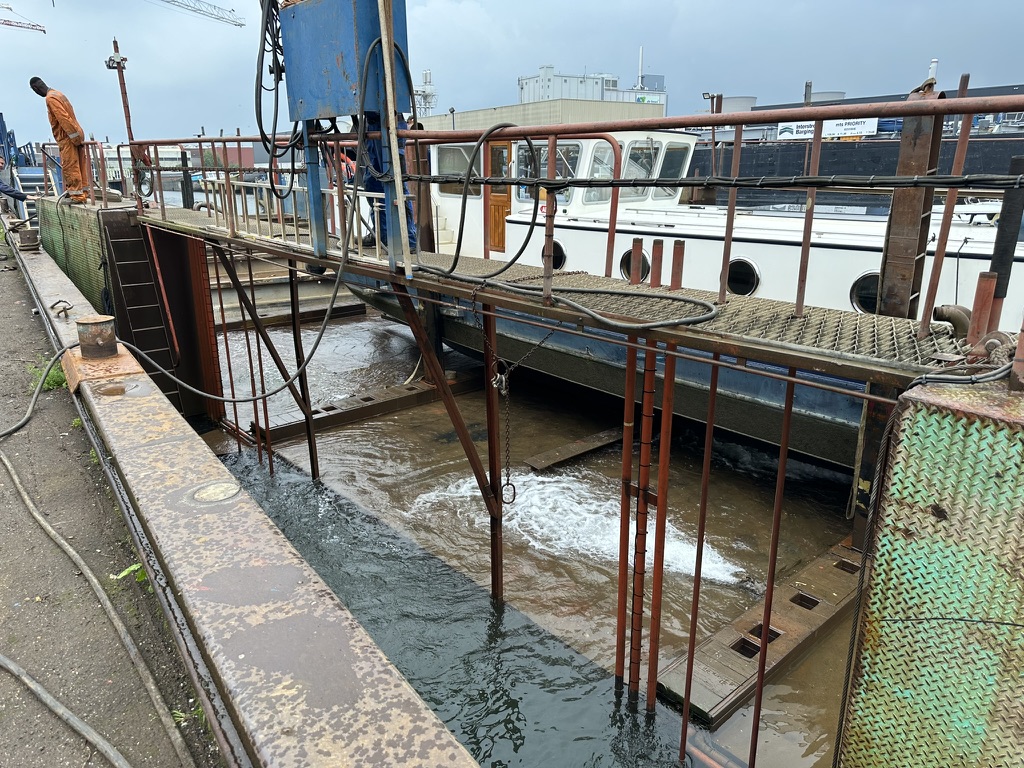
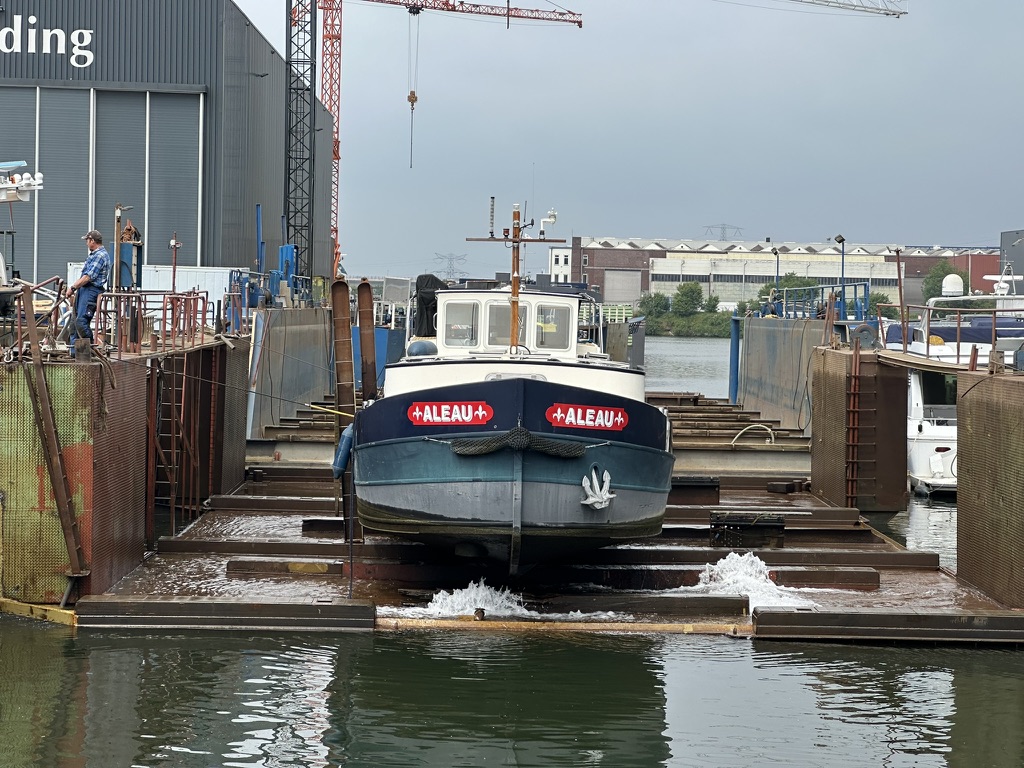
Aleau was out of the water but we still had to get on and off. Tinnemans had another “solution.” The yard has a half-dozen cranes which are used for just about any job imaginable. One was used to deliver a gangway.
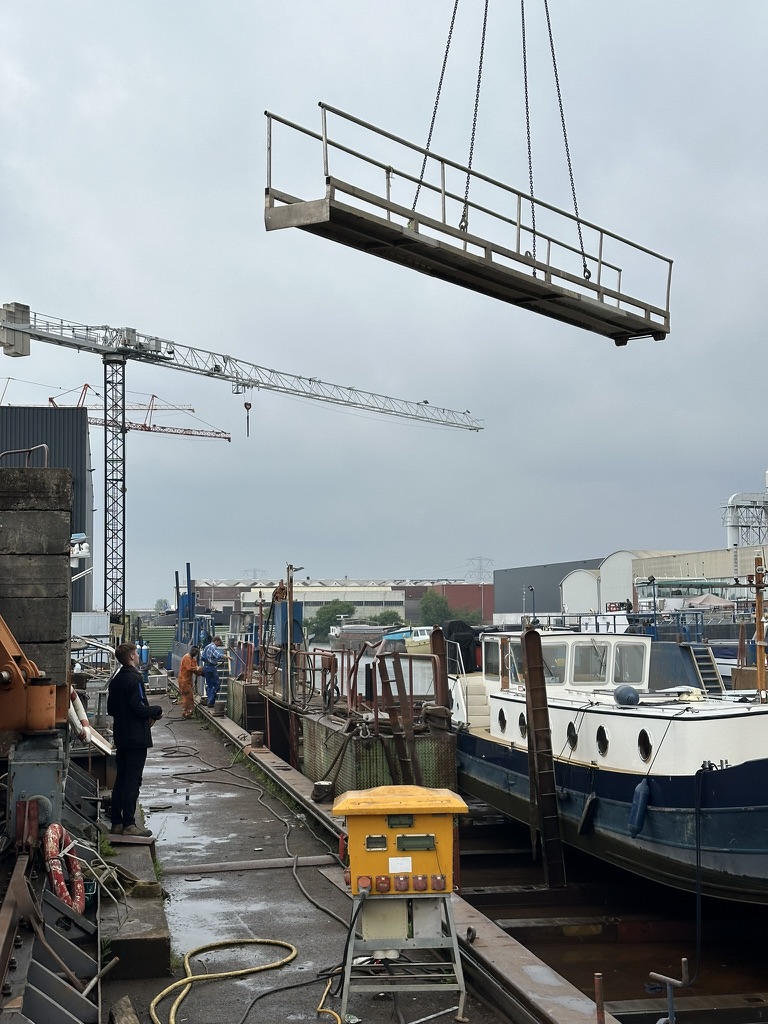
With the gangway being lowered from above, a worker below was getting rid of five years worth of marine life that had been making Aleau home.
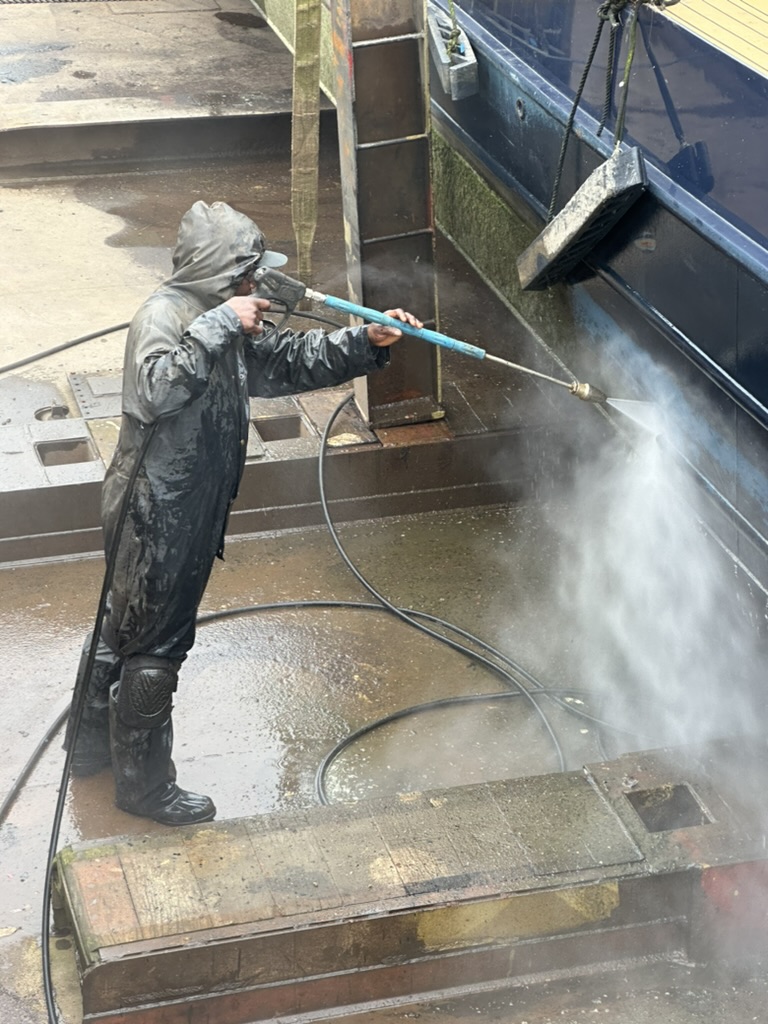
Mussels not only had to be removed – but packaged and sent to a disposal company. Tinnemans had to show receipts to the Netherlands environment department to prove what came off Aleau wasn’t just put back in the water.
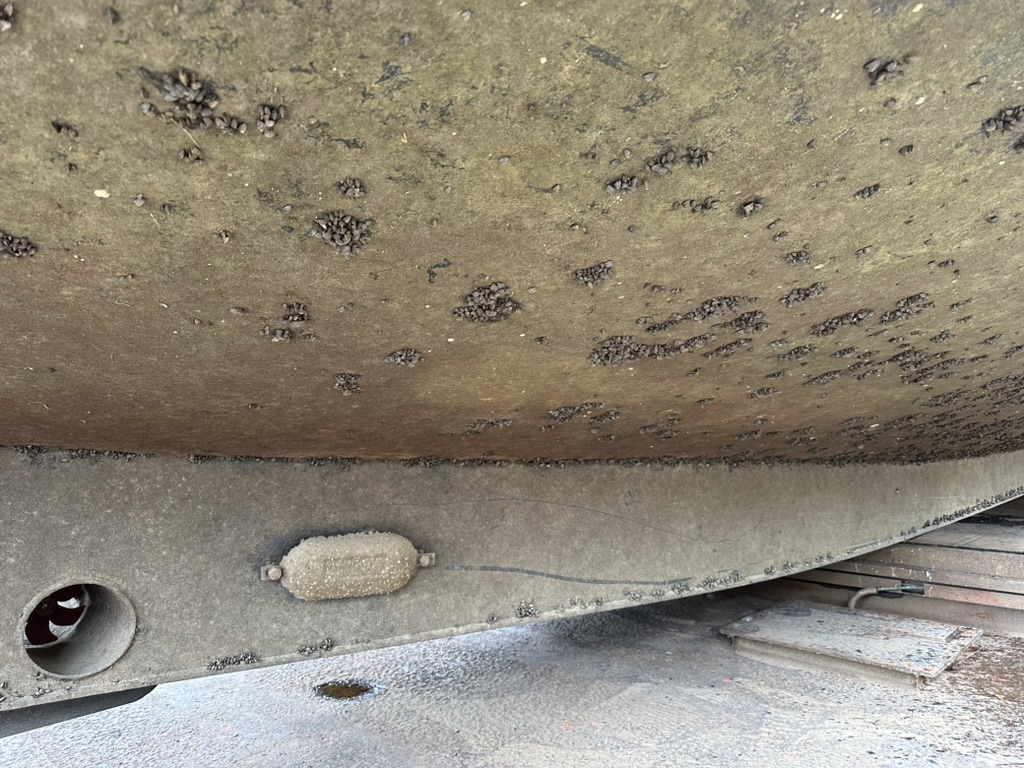
Once clean, the hull was covered with two coats of “black” and then two coats of anti-fouling. Let’s hope that keeps the mussels away for a few years.

It took days to get it all on.
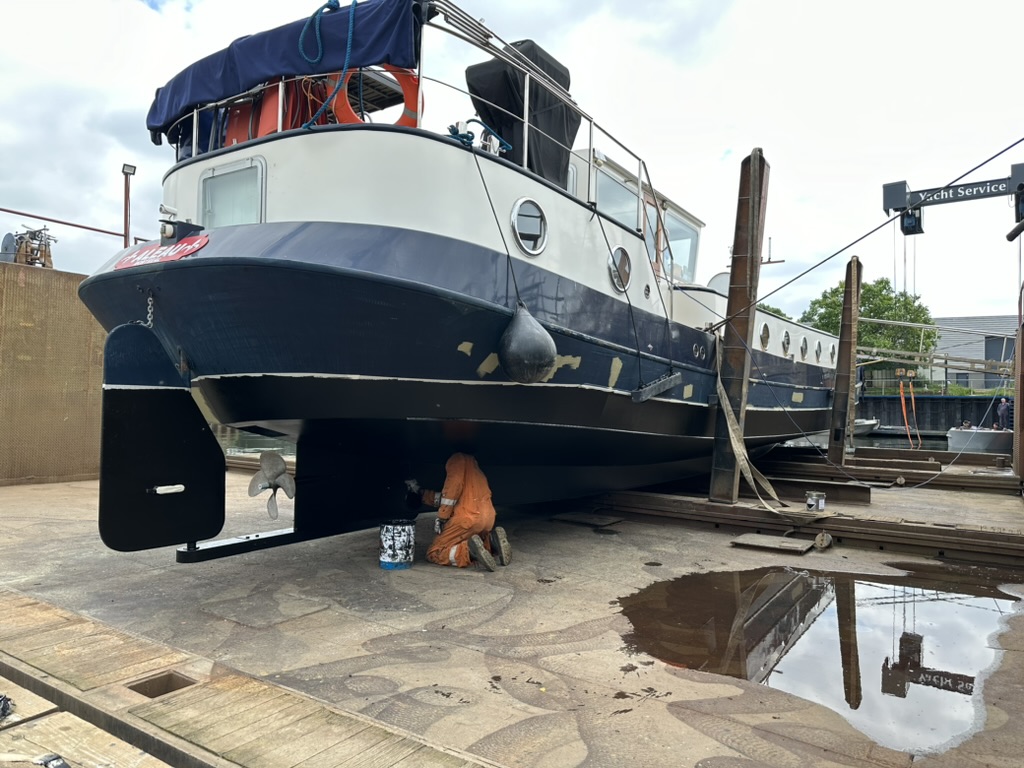
Above the waterline, Aleau had to be sanded and primed.
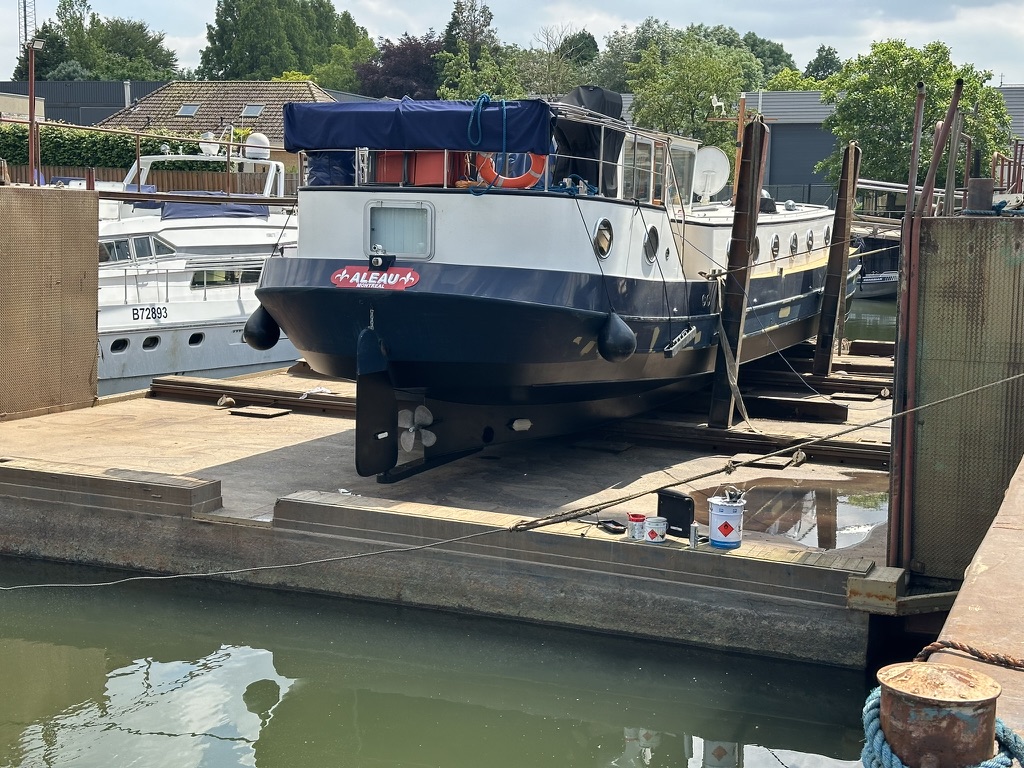
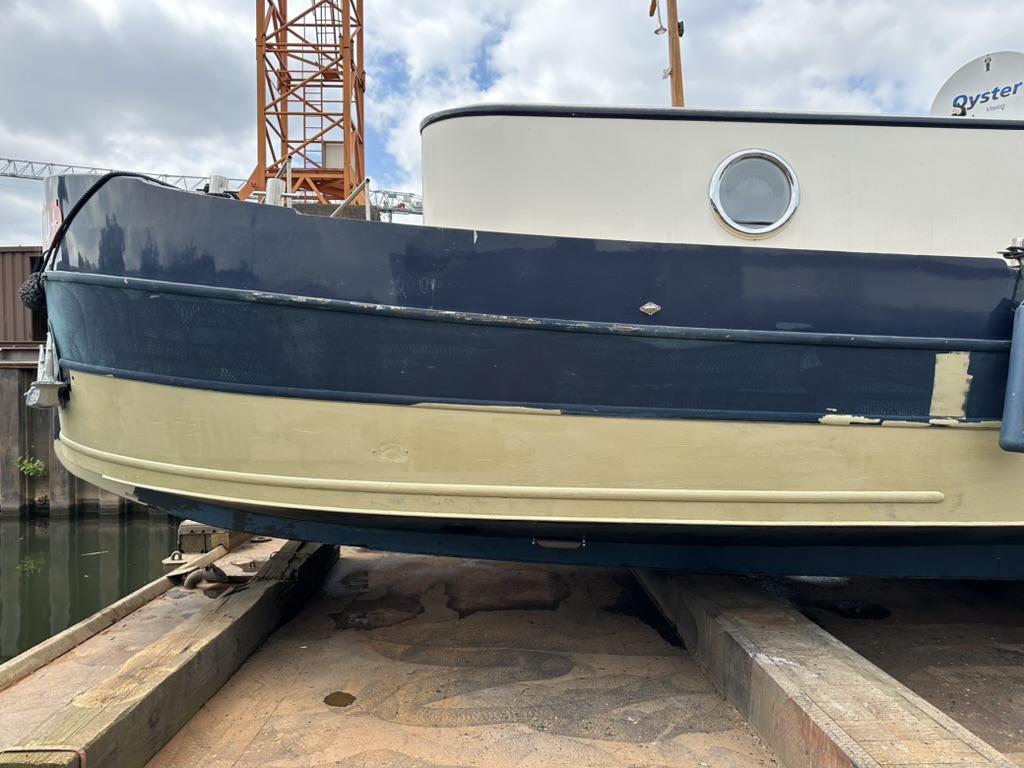
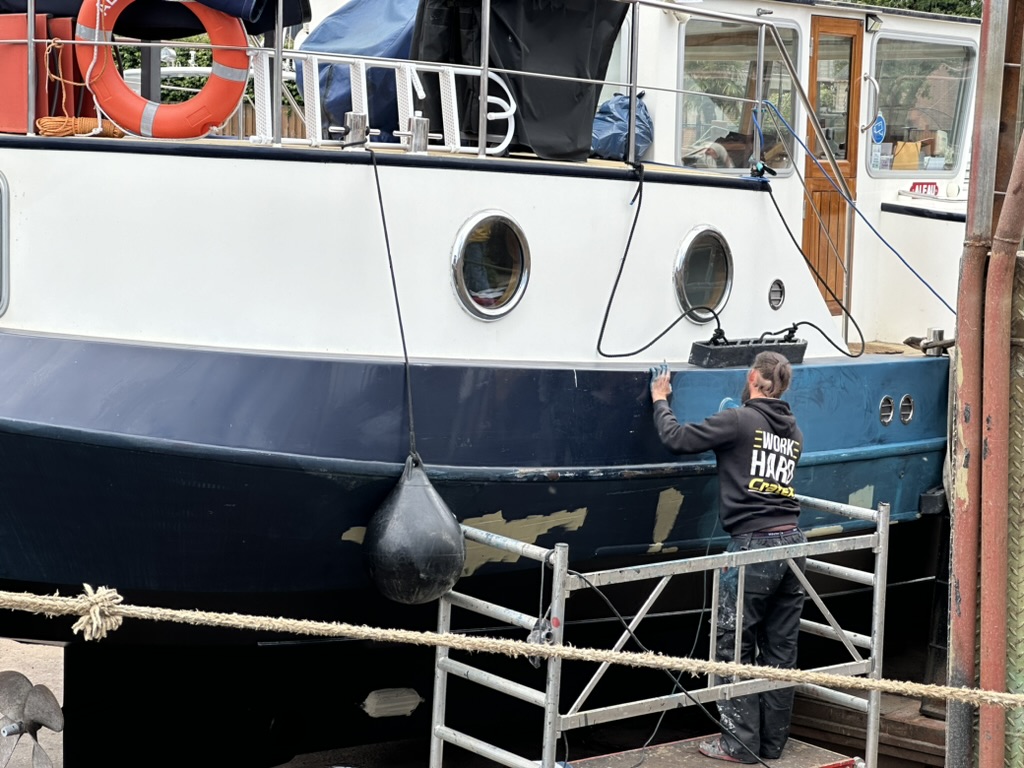
Work was going on inside as well. Our generator needed to be repaired. And our electrical system needed to be prepared for the installation of solar panels on the wheelhouse roof. The list of what had to be done went on for many pages. We were going to be in Tinnemans for quite some time.
